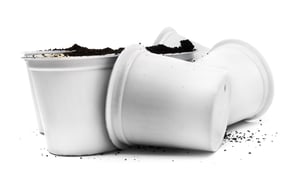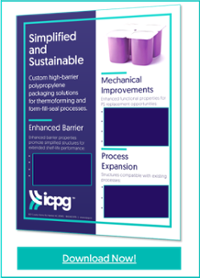 The day I purchased a single-serve coffee machine changed my life. I used to brew my coffee in a traditional percolator – remember those? I would patiently wait while it sputtered and steamed, filling my travel mug for the day. But as a three‑cups‑a‑day coffee drinker, that one travel mug didn’t stretch far — and by the time I got home, the leftover pot was cold and stale. Most of it went to waste. The day I switched to a single‑serve coffee maker, I could enjoy a fresh, hot cup anytime I wanted, and I quickly realized the power of convenience.
The day I purchased a single-serve coffee machine changed my life. I used to brew my coffee in a traditional percolator – remember those? I would patiently wait while it sputtered and steamed, filling my travel mug for the day. But as a three‑cups‑a‑day coffee drinker, that one travel mug didn’t stretch far — and by the time I got home, the leftover pot was cold and stale. Most of it went to waste. The day I switched to a single‑serve coffee maker, I could enjoy a fresh, hot cup anytime I wanted, and I quickly realized the power of convenience.
A concept that most of us users of single-serve coffee brewer systems probably don't think much about is the packaging of said coffee. We have grown accustomed to seeing these plastic coffee "pods" or capsules in our households without giving much thought to the development that occurs upstream in the supply chain to ensure that once the product arrives in our homes, it is safe, fresh and ready to use. From manufacturing to your kitchen counter, coffee pod packaging solutions must maintain product freshness, protect quality, and meet strict food safety requirements. Add to that the growing Proposition 65 compliance standards, plus rising demand for recyclable and sustainable materials, and the challenge becomes even greater.
Continue reading to learn more about some of the key considerations in designing coffee pod packaging that delivers freshness, safety, and sustainability — and how ICPG can help.
What Are the Barrier Requirements for Coffee Pod Packaging?
Determining the barrier requirements for single-serve coffee pods is an essential requirement to keeping the product fresh while providing the expected level of application performance. There are several key factors to consider in order to meet these requirements, including processing and environmental conditions, supply chain management, retail conditions, UV degradation, oxygen and moisture sensitivity and overall shelf life expectations.
One of the primary elements to achieving target shelf life is understanding the required OTR (Oxygen Transmission Rate) and MVTR (Moisture Vapor Transmission Rate) specifications, then developing a material structure with the appropriate barrier characteristics to protect the product throughout its desired shelf-life performance. This could be as simple as a PP or HDPE for moisture protection, or a multi-layer coextrusion incorporating EVOH for higher oxygen barrier needs.
Equally important is material distribution — ensuring barrier thickness remains consistent despite pod depth and avoiding weak points at sharp corners. Every factor, from processing method to retail conditions, influences the final coffee pod packaging performance.
Selecting the Right Processing Method
Your coffee pod packaging design must align with its intended processing and sterilization method. Single‑serve coffee and tea pods can be manufactured using deposit fill seal, MAP, or form fill seal.
The packaging and processing method, along with the barrier requirements, will play a significant part in determining the best material structure to maintain the safety and integrity of the product. Today’s coffee pods are available in both barrier polystyrene and polypropylene structures, each offering oxygen and moisture protection to extend shelf life and minimize flavor degradation.
Choosing the Best Material for Coffee Pod Packaging
 Single serve brewers offer a unique challenge when considering the appropriate material and structures required to protect the product while providing the required level of functionality for the pod and brewer system. This is especially critical given the need to puncture the bottom of the container without material propagation (material splitting or fracturing). Historically, a PS/EVOH/PE structure was the go‑to for stiffness, sealability, and filter bonding. However, with the implementation of Proposition 65, food‑contact packaging made with polystyrene (PS) faces new challenges, as styrene is now classified as a known carcinogen. As a result, many companies are undertaking the initiative to replace food contact PS structures with more health-conscious and environmentally friendly materials.
Single serve brewers offer a unique challenge when considering the appropriate material and structures required to protect the product while providing the required level of functionality for the pod and brewer system. This is especially critical given the need to puncture the bottom of the container without material propagation (material splitting or fracturing). Historically, a PS/EVOH/PE structure was the go‑to for stiffness, sealability, and filter bonding. However, with the implementation of Proposition 65, food‑contact packaging made with polystyrene (PS) faces new challenges, as styrene is now classified as a known carcinogen. As a result, many companies are undertaking the initiative to replace food contact PS structures with more health-conscious and environmentally friendly materials.
ICPG offers an innovative alternative — XPP Enhanced Barrier Polypropylene, delivering enhanced stiffness and up to 60% improvement in barrier properties, and compliance with Proposition 65 material replacement initiatives.
Sustainability and Recyclability in Coffee Pod Packaging
As the global demand for sustainable and recyclable packaging solutions increases, the push to develop fully recyclable solutions across all industries has become a top priority. Considering the sheer volume of coffee pods and capsules being produced and consumed, it is no surprise that the industry is under pressure to develop a solution for their pod products that is fully recyclable.
However, advancements in cutting-edge barrier technology for specialty polypropylene materials can allow the right ratio of materials to achieve required barrier performance properties, while allowing for mono-material recycling (i.e. using the resin ID code (RIC) #5 vs RIC #7).
Polypropylene not only meets barrier performance needs but also ranks as one of the most widely recycled rigid packaging materials in the U.S. — making it a strong choice for brands seeking both sustainability and market appeal.
Brew Innovation Into Your Coffee Pod Packaging
Feeling inspired to brew something new with ICPG? Click on the link below to download our single-serve thermoformed coffee & tea capsule solutions info sheet to learn more about the materials, structures and capabilities available for your custom project — or reach out to our team to discuss your unique packaging goals.




